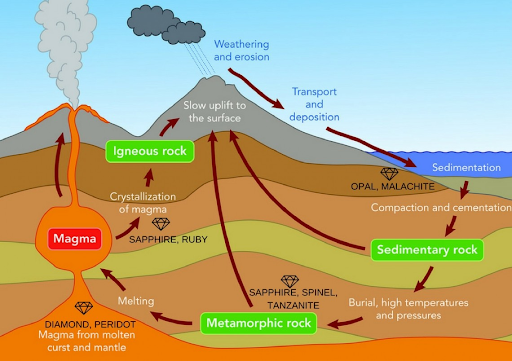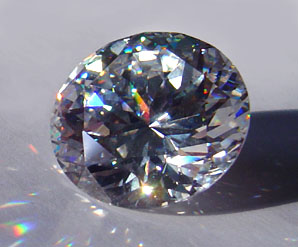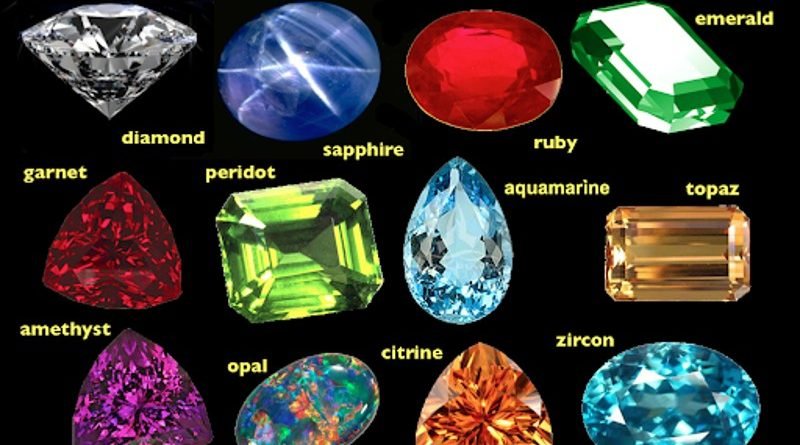How are Gems Made?
Gems are the fruitful plunder that prospectors and miners dream of uncovering! They are naturally occurring mineral nodules that are desired by all for their rarity and beauty. But how are these rocks made? Until recently gems were made exclusively under natural geological processes over millions of years. But today artificial gems are taking the jewelry world to a new realm of gem exclusivity.
How are ‘Natural’ Gems Made?

Via: Gem Rock Auctions
So what are these ‘natural processes’ that we speak of? How is a diamond made versus, let’s say, an opal? To get started in this explanation it is best to give specific examples of gems to get some insight into how each of them develops uniquely to each other.
Diamond

Via: 1215diamonds.com
A diamond is mainly found in igneous rock formations (volcanic rock) and forms deep within the earth as carbon deposits are subjected to high temperatures like volcanic eruptions and pressure. Some rocks take days to form, whilst others are more gradual and can take millions of years. This growth period does not stop and will accelerate or grind to a halt depending on the conditions around it.
Sapphire

Via: withclarity.com
This regal blue gem is actually a close relative to ruby as both are varying shades of the mineral corundum, where the sapphire color comes from the presence of titanium in the rock. That being said, the purest sapphires come from the cooling of magma pools on the surface after a volcanic eruption. The longer it takes to cool, the larger this igneous gem will be!
Ruby

Via: withclarity.com
Rubies are the red shade of the mineral corundum and get their color from the presence of Chromium in the gem. It is formed in a virtually similar way to sapphire.
Opal

Via: gem-a.com
Opals are made of silica spheres which form when silica-rich water seeps down into the fissures and cracks of the earth and fills in these holes. There are many types of opal which are defined by the number of unique splashes of color are present in the piece. Normal opal has one or two colors and is usually opaque and dull. Noble opal is much more sought after as it shows a range of colors mimicking a rainbow caught in a sphere!
Turquoise

Via: thespruce.com
This striking blue gem is formed when water that contains copper and aluminium leaks into cracks in the earth’s surface creating this aqua blue formation as it solidifies. The copper is what gives its signature color which is rarely found in the natural world!
Have you seen our ‘Arizona Turquoise’ collection at Thourum? Check out these two stunning rings adorned with bright blue speckles of gems!


How are ‘Faux’ Gems Made?

Via: gia.edu
Faux gems are minerals created and grown in a lab. These have gained popularity over the years as they have allowed the perfect gems to be created under the right conditions and at an inch of the time natural gems occur.
Lets face it, most minerals when they are mined are not perfect and might need to be polished to look right enough to be worn as a pendant, even then it might take you years to find that dream piece! Mining gems comes down to luck in the large part, but what if you could make it that every time you found the perfect one? Thats when science can take the stress out of the hunt and help make it right the first time around.
Opal

Via: geology.com
A faux opal can be made many ways, but scientists have found it easy to replicate the silica reactions in water to create perfect synthetic gems! They create a sheet of beautiful colours and then impregnated them with resin to achieve the robustness and signature glass of the natural product.
Check out our Magni band made of fire opal! The Magni

Cubic Zirconia

Via: Wikipedia
Another amazing faux gem is cubic zirconia. It looks soo much like diamond and yet did you know you can get a piece for a quarter of its price? One of the benefits of buying artificial gems is you save money, whilst saving the planet too! It is crafted in a similar way to how diamond forms naturally, requiring an environment of high pressure and temperature to form. Scientists mix zircon and zirconium (IV) silicate and cubic zirconia forms under the right conditions!
At Thorum we have soo many beautiful Cubic Zirconia ring pieces to choose from.

Final Remarks
Via: Geology Nerd
The processes of how gems are made are soo fascinating. They help us appreciate the little rocks in our lives which have gone through lengthy processes to find their way into glowing as bright beacons in the dark. Why not consider getting a ring which has a few of this sparklers for your own? Thorum has you covered!
Read Also: Bridal Jewellery Designs That Suit Your Personality


